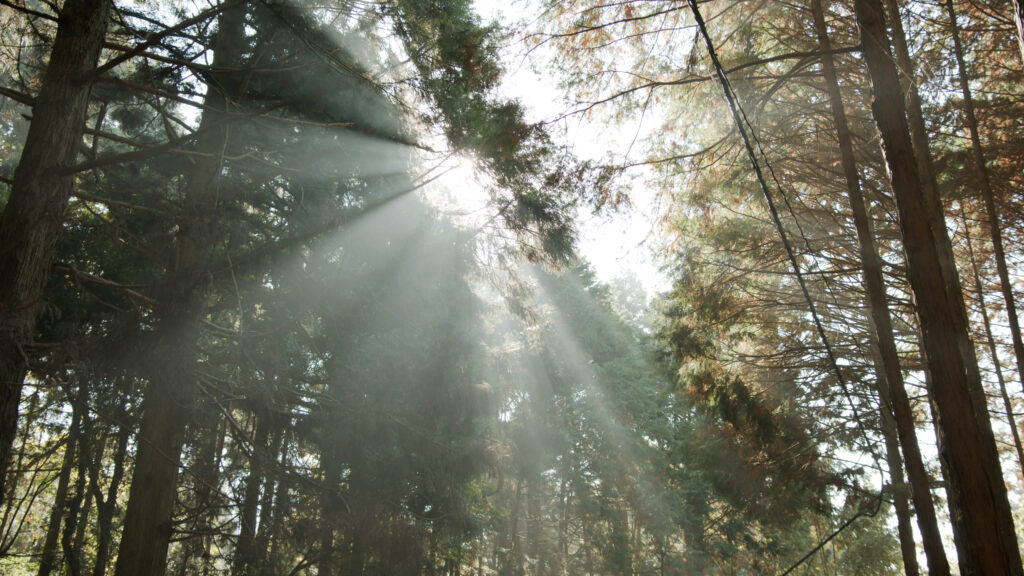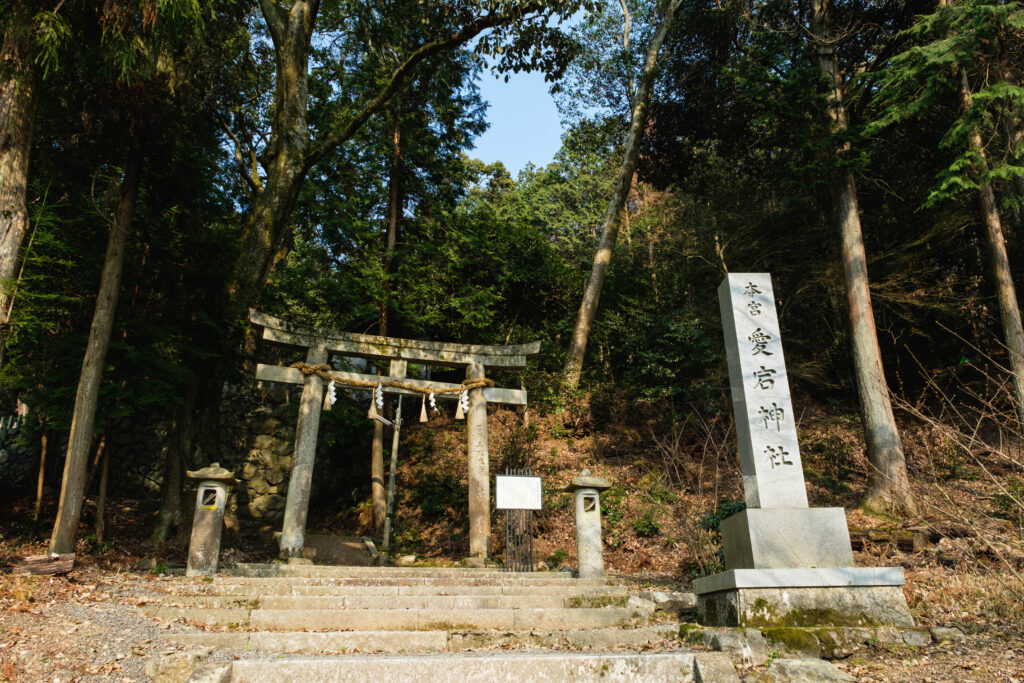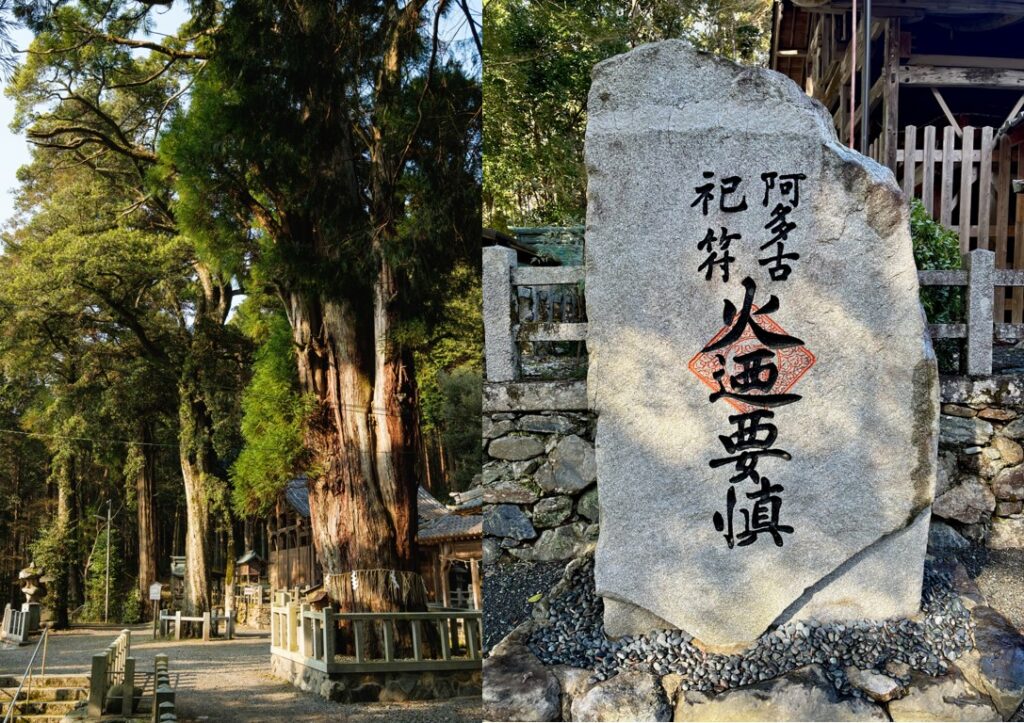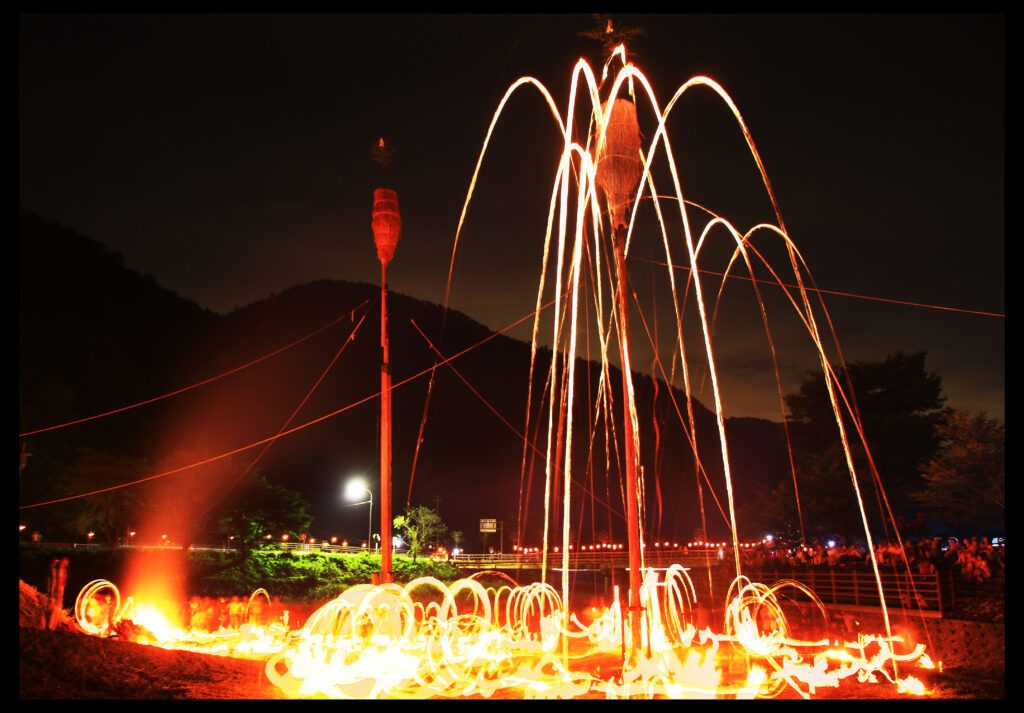Fire faith in Kyoto

First, let’s unpick the relationship between fire and faith in the Woodland Kyoto area. Japan is a country of wooden architecture. Its forests have been an abundant source of wood for houses, bridges and towns since time immemorial. Historical records show that when Kyoto was being built in the late 9th century, lumber was brought from the Woodland Kyoto area to use in the construction of the new capital. But wood is flammable, and with so many timber buildings densely packed together, the old city of Kyoto was ravaged by huge fires time and again. The people came to view fire simultaneously as a sacred presence that lit up the darkness and extinguished impurities and a fearsome force of destruction. This is thought to be why the people of Kyoto, more so than other communities, made fire part of their religion and attempted to seek divine protection from its wrath.

One bastion of Kyoto’s fire-related beliefs is Atago Shrine in Kameoka City west of Kyoto City. The Kameoka area has a long history, and records suggest that Atago Shrine was founded in the year 507. It enshrines the fire deity Homusubi-no-kami and his mother who are believed to grant protection against fire. The shrine is nestled at the foot of a small mountain and surrounded by thick, green forest. There’s a giant thousand-year-old cedar tree in the grounds, and the main hall, designated a National Important Cultural Property, dates from the Kamakura era (1192-1333), so you get a strong sense of just how long this shrine has played a part in local religious practices.

There’s also another Atago Shrine in the area situated at the top of Mt. Atago about five kilometers away as the crow flies on the border of Kyoto and Kameoka Cities. Mt. Atago is well known as a sacred mountain that protects over Kyoto. The mountaintop shrine is the more famous of the pair as a destination to pray for protection from fire, but the deity enshrined there was transferred to the mountaintop location from the Kameoka shrine. The Kameoka Atago Shrine is commonly referred to as Moto-Atago (meaning “the original place of the Atago faith”) for this reason. Both shrines issue fire protection amulets which are often found in Kyoto on the walls of home and restaurant kitchens or artisans’ workshops where fire is used. The Kameoka Atago Shrine holds an annual Fire Extinguishing Festival to pray for the prevention of fire every April 24th.
Atago Shrine
Address: 1-1 Minami-yamanokuchi, Chitosekokubu, Kameoka City

Another of the fiery traditions of the Woodland Kyoto area is a spectacular fire festival. Called Agematsu or Matsuage, it’s held each year in late August in Miyama, a picturesque rural village in Nantan City that’s famous for its thatched-roof houses. The event takes place in four of the village’s districts and involves small flaming torches being thrown at a giant 20-meter-tall torch called a torogi to pray for a bumper harvest and implore the deities of Atago Shrine to prevent fire disaster. It’s a stunning, other-worldly spectacle with the fire lighting up the night sky as if to signal the end of summer.
Agematsu Fire Festival
When: 8 pm on certain nights in late August (lasts approx. 30 minutes)
Where: Morisato, Kawai, Tono, and Ashiu districts of Miyama-cho, Nantan City
Further information is available from Kyoto Miyama Tourism Association.

